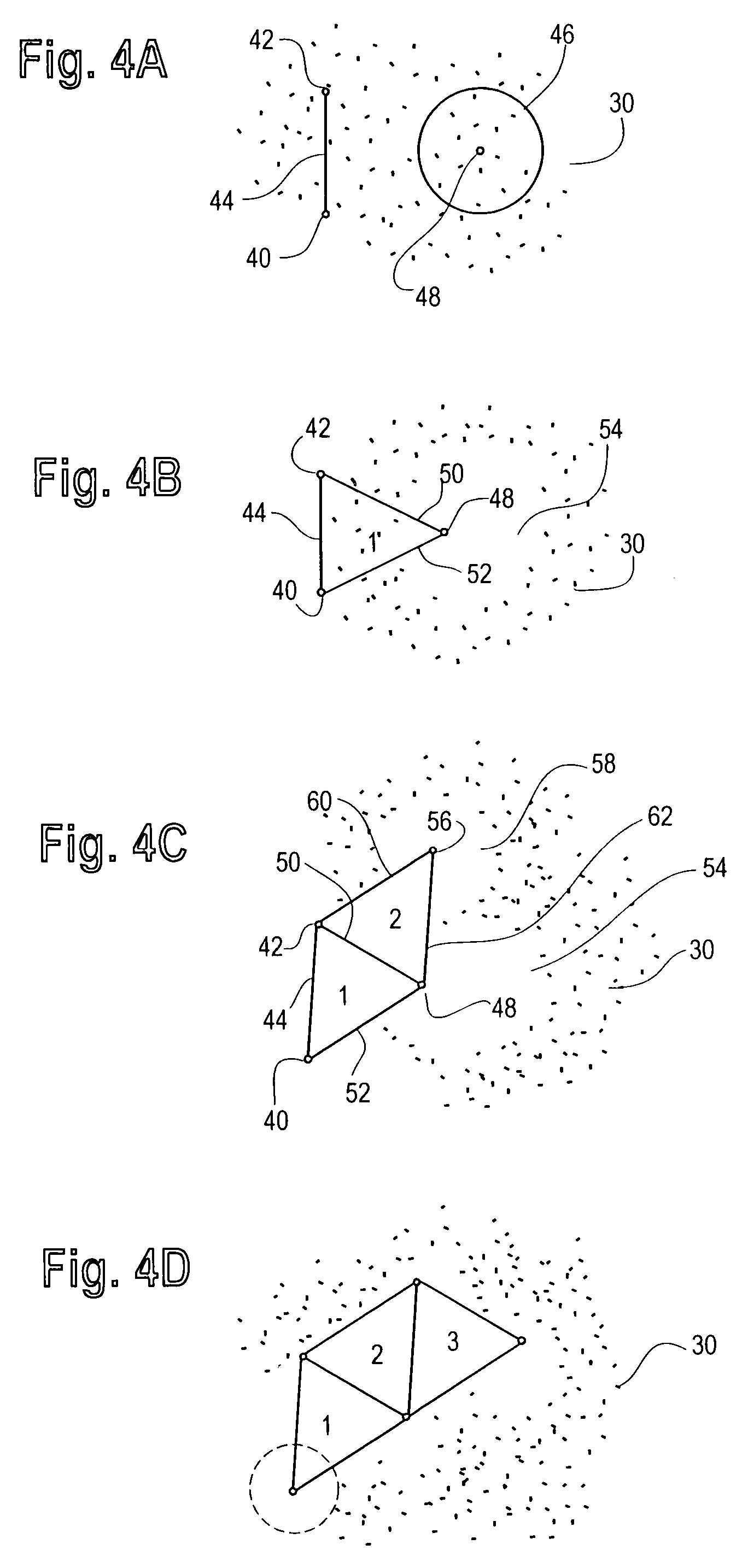Method for creating single 3D surface model from a point cloud
a point cloud and surface model technology, applied in computing, instruments, electric digital data processing, etc., can solve the problem of difficult construction of a single surface representing an object from a cloud of points, and achieve the effect of minimizing deviation of initial triangles and maximizing data reduction
- Summary
- Abstract
- Description
- Claims
- Application Information
AI Technical Summary
Benefits of technology
Problems solved by technology
Method used
Image
Examples
Embodiment Construction
[0042]FIG. 1 is a schematic diagram of one possible environment in which the invention can be practiced. A scanner 10 consisting of an optical probe unit 12 and scanner electronics module 14 conducts a 3D scan of an object 16. The object 16 can be virtually anything, including anatomical structures such as teeth or other intra-oral structures. The present invention is not limited to any particular type of scanner or object, and the scanner could be a laser scanner. In the illustrated embodiment, the scanner is a hand-held in-vivo scanner as described in the published PCT application of OraMetrix cited previously. An opaquing solution may be applied to the surface to be scanned to enhance the ability to scan an object in a “wet-field” environment, as taught in the patent application of Nancy Butcher et al., Ser. No. 10 / 099,042, filed Mar. 14, 2002, the contents of which are incorporated by reference herein.
[0043]The scanner 10 obtains scan data describing the surface configuration an...
PUM
 Login to View More
Login to View More Abstract
Description
Claims
Application Information
 Login to View More
Login to View More - R&D
- Intellectual Property
- Life Sciences
- Materials
- Tech Scout
- Unparalleled Data Quality
- Higher Quality Content
- 60% Fewer Hallucinations
Browse by: Latest US Patents, China's latest patents, Technical Efficacy Thesaurus, Application Domain, Technology Topic, Popular Technical Reports.
© 2025 PatSnap. All rights reserved.Legal|Privacy policy|Modern Slavery Act Transparency Statement|Sitemap|About US| Contact US: help@patsnap.com



